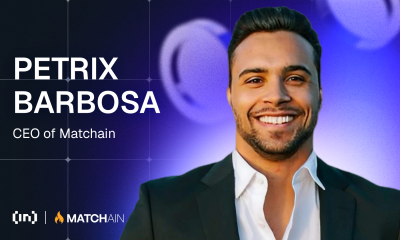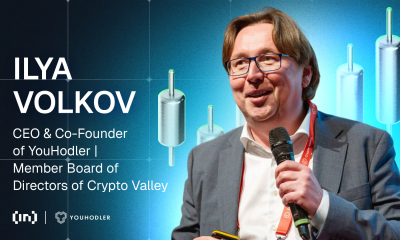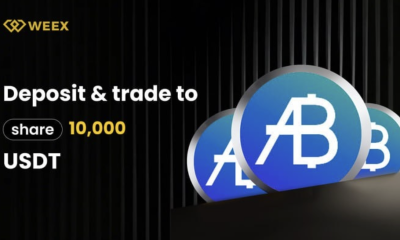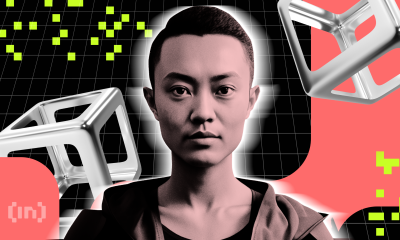Market
Yat Siu Talks Blockchain Gaming and Digital Identity
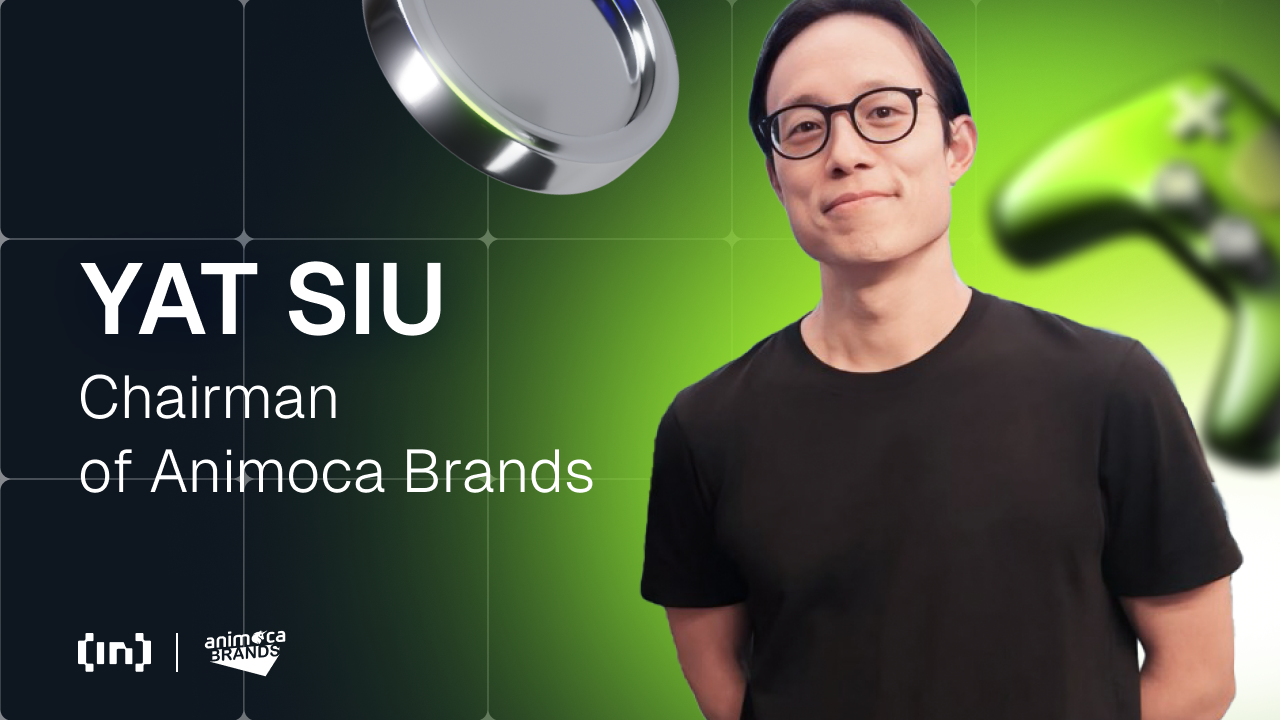
Yat Siu, co-founder and executive chairman of Animoca Brands shared his unique perspective on the evolving landscape of Web3, drawing from his extensive experience in tech innovation and his multicultural background.
In a recent interview with BeInCrypto, Siu highlighted the stark contrast between Eastern and Western attitudes. He also offered valuable advice for aspiring artists in the age of AI.
As a global leader in blockchain and gaming, Siu’s vision for the future of blockchain technology was evident in his discussion of Mocaverse, a project aimed at solving digital identity issues in Web3. His insights on China’s approach to blockchain and Hong Kong’s role as a crypto sandbox provided a nuanced view of the industry’s global dynamics.
Q: Why do you think the MOCA price rose significantly, compared to other Game tokens?
There is a whole series of tokens that haven’t done that well. But some have done well like Bitcoin, Ethereum, Solana, and TON, plus in our case, I would argue MOCA, too. The key difference is the institutional support. Projects with institutional backing tend to perform more stably. Starting with the Bitcoin ETFs, I think we’re entering an institutional era of crypto, meaning that, to stand out, you now need institutional support.
Q. How does the institutional support help the growth of projects?
The traditional stock market is by-majority institutional, but the token market is by-majority retail. In an institutional market, you diligently research to know what the project is about because you have large purchasing power and long-term planning.
Retails have a lot more short-term behavior naturally. For instance, Pump.fun launched two million tokens in the last 6 months. It is amazing as a business model, but also concerning. Among the new tokens, many of them are very small, and may also be very speculative.
An institution will not invest in Pump.fun. They have discipline. In this age, projects that have institutional support and capability become much more relevant.

Q: As an advisor to the Hong Kong Government’s Web3 Task Force, how do you interpret the recent atmosphere of the industry in China and Hong Kong?
Although President Xi Jinping put blockchain technology into his agenda, you can’t just assume by China saying “we’re supportive of blockchain”, that they will allow Bitcoin to be traded in China. You can’t even trade the US dollar in China, and what makes you think it should be okay to do crypto?
But there is a role for Hong Kong, which has been a financial clearing house for international capital in and out of the mainland.
It makes sense that Hong Kong is becoming pro-Web3 and pro-Crypto because it is the sandbox for China. If something happens, it can happen in Hong Kong and won’t affect China. Moreover, Chinese capital might flow out to other places, but it would rather be in Hong Kong, a free market under China’s influence than move to the US ally’s soil like Singapore.
Read more: Crypto Regulation: What Are the Benefits and Drawbacks?
Q. You have a Chinese background, but you grew up in the West, in Austria. How do Web3 and GameFi differ between East and West?
Asia is more pro-capitalist and the West is split between capitalism and, especially in Europe, more socialism. In Asia, even in China, they are capitalists by nature, and it doesn’t matter if you are called the Communist Party. That is not true for Europe and many young Americans. So if you’re a gamer in Asia, you make money with your assets and it’s okay because by nature you are comfortable with capitalism. But in Europe, people don’t necessarily agree with that. In America, the younger generation doesn’t necessarily believe in capitalism because it hasn’t worked for them.
There’s an ironically greater love of capitalism in Asia, which is why DeFi and GameFi are growing. I wouldn’t say everyone, but there’s a much louder voice of people in the West who don’t like it. If you talk to gamers in the West, they will say “I don’t want money to swallow my game”.
Q. Between Game Boy (of Nintendo) and Game Science (of Black Myth: Wukong), which one would you choose?
I would go for the Game Boy. I’m very proud that Black Myth: Wukong can be a global hit coming out of China. It’s an interesting moment. However, Wukong would not have been possible to be popular if it wasn’t for the earlier kinds of Asian game companies and Asia-led culture booms leading the way. In other words, the Chinese moment came thanks to Japan and Korea. Japanese anime paved the way for K-pop and K-drama, and K-culture did the same for China. Even if Wukong might become bigger, Gameboy should be respected.
Q: You studied music in college in Vienna. As an artist, what advice do you have for aspiring artists in the age of AI?
Regardless of what you do, especially for those who want to do creative things, it is important to own your property. The most successful musicians like Michael Jackson had a growing asset base because they owned their intellectual properties. On top of that, you need to understand money and business which we don’t teach in school. You can’t have independence if you outsource the value of the system. If you have an idea, if you create music, if you’re a performer, the important thing is to make sure you own enough of your property to have the long tail benefit for your work. Maybe it would make no difference if you’re not very successful, but if you have something successful, you know what I mean.
Q. How can blockchain benefit content creators?
The biggest theft in Web2 was those like YouTube, Instagram, and Tiktok. In the early days of YouTube, mukbangs, live-streamed videos where viewers watch the host eat, were very popular, but even when the creators became famous, the content was not theirs and they lost the IPs to YouTube. The same is true for Instagram, and when people take a photo on Instagram, they spend a long time getting the angle. But they don’t get paid for the work or its IP. Even when you make a video that goes viral on TikTok, you get nothing. In Web3 with blockchain, you own the property. If you mint it as an NFT, you have the history and the record. You will be able to defend theft from the blockchain. You can’t stop it, but you can trace and claim its ownership. That’s the point.
Q: What major factors of the industry have drawn your attention recently?
The crypto industry has grown over the last 12 months. We’ve had a lot more launches, a lot more projects, and a lot more people involved in the space.
In particular, we’re excited about TON and Mocaverse. The TON ecosystem brings many users into Web3 and our games like Gamee now have 90 million users. And for the Mocaverse, we think it’ll solve digital identity. Often it is the same people who are essentially farming the tokens which is a problem. You want to make it more distributed and you want to make it not go to bots but to individuals. You need an identity solution, and that’s what Mocaverse is doing.
Disclaimer
In compliance with the Trust Project guidelines, this opinion article presents the author’s perspective and may not necessarily reflect the views of BeInCrypto. BeInCrypto remains committed to transparent reporting and upholding the highest standards of journalism. Readers are advised to verify information independently and consult with a professional before making decisions based on this content. Please note that our Terms and Conditions, Privacy Policy, and Disclaimers have been updated.
Market
Will Bittensor Surpass Bitcoin as a Store of Value? Expert Predicts
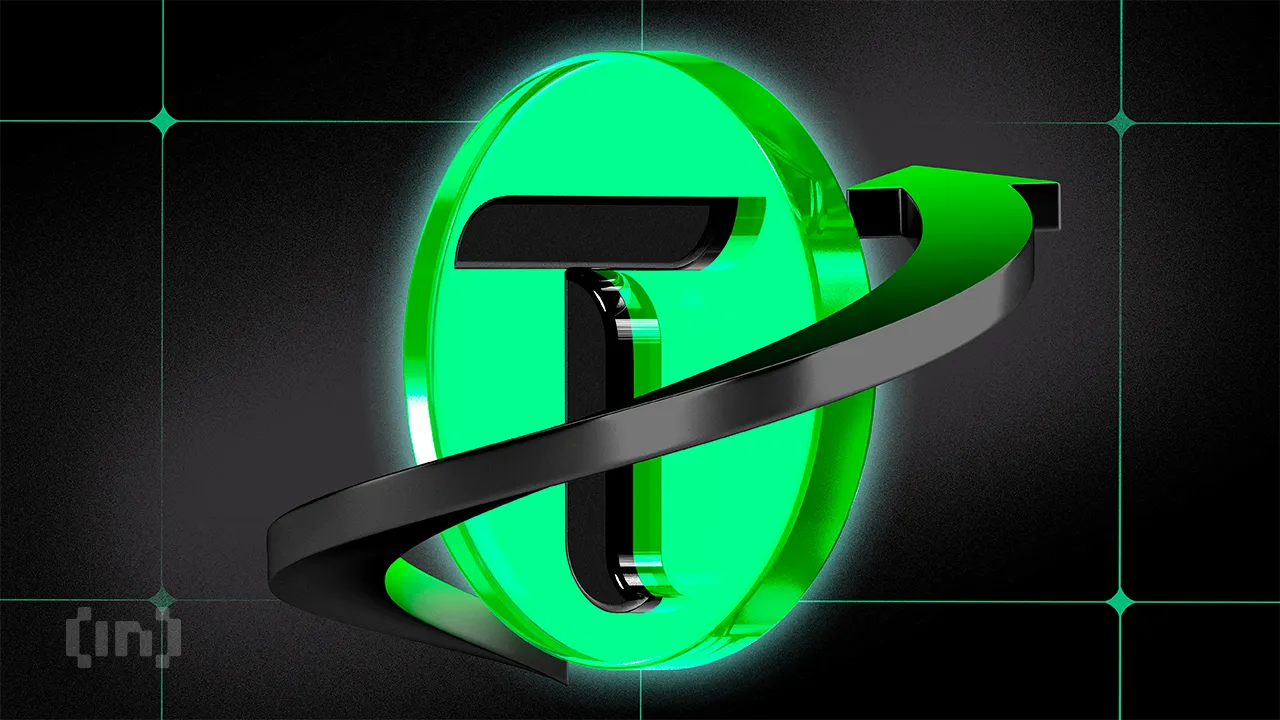
Barry Silbert, CEO of Digital Currency Group, has stated that Bittensor (TAO) has the potential to outperform Bitcoin (BTC) as a global store of value.
His comments come amid notable growth in the Bittensor network, with its subnet ecosystem market capitalization and the TAO token’s price on the rise.
Will Bittensor’s Decentralized AI Model Outperform Bitcoin’s Legacy?
In a recent interview with Raoul Pal, Silbert highlighted the growing influence of artificial intelligence (AI) in the crypto sector. According to him, Bittensor is at the forefront of this revolution, representing the “next big era for crypto.”
“You had the Bitcoin and the Ethereum and the NFTs, and you had the layer 2s and DeFi. I think this is the next big investment theme for crypto,” Silbert stated.
He went on to explain that Bittensor shares the same pioneering spirit as early Bitcoin. Still, its purpose extends beyond financial sovereignty.
“The boldest prediction that I could make for Bittensor is it could be a better version of Bitcoin as a global store of value,” he claimed.
He argued that instead of the $10 to $12 billion spent annually to secure the Bitcoin network, that same amount could be redirected toward incentivizing a global network of individuals working to solve major world problems. He envisions this money fostering innovation on a massive scale, with the potential to grow into a multi-billion-dollar ecosystem.
While acknowledging the value of securing the Bitcoin network, Silbert emphasized that Bittensor’s potential lies in its ability to harness this vast financial backing to address real-world challenges.
He noted that Bittensor operates on a similar economic model to Bitcoin, with halving mechanisms and decentralization, positioning it as a powerful contender in the quest for a more impactful and value-driven global network.
Silbert also noted that while plenty of decentralized AI projects have emerged, Bittensor has set itself apart. He referred to it as having reached “escape velocity.” This term is used to convey a project’s rapid growth and increasing market influence.
“99.9% of crypto tokens that are out there have no reason to exist and are worthless,” he added.
Market data reflects the growing enthusiasm for Bittensor. Notably, amid the ongoing volatility, TAO has fared well in comparison to the broader market, rising 32.1% in the last week. At press time, the altcoin was trading at $328, up 7.2% over the past day.

Additionally, TAO is currently the top trending cryptocurrency on CoinGecko, underlining its rising popularity among investors. Google Trends data further proves the growing interest in Bittensor. The search volume peaked at 100 at the time of writing.
Meanwhile, the Bittensor ecosystem is also seeing notable progress. The latest data indicated that the market capitalization of Bittensor’s subnet tokens more than doubled in April 2025.

It increased by 166%, rising from $181 million at the beginning of April to $481 million at press time. As reported by BeInCrypto, this growth follows a tripling of active subnets over the past year.
Disclaimer
In adherence to the Trust Project guidelines, BeInCrypto is committed to unbiased, transparent reporting. This news article aims to provide accurate, timely information. However, readers are advised to verify facts independently and consult with a professional before making any decisions based on this content. Please note that our Terms and Conditions, Privacy Policy, and Disclaimers have been updated.
Market
XRP Bulls Defend $2.00—Is a Fresh Price Surge Loading?

Aayush Jindal, a luminary in the world of financial markets, whose expertise spans over 15 illustrious years in the realms of Forex and cryptocurrency trading. Renowned for his unparalleled proficiency in providing technical analysis, Aayush is a trusted advisor and senior market expert to investors worldwide, guiding them through the intricate landscapes of modern finance with his keen insights and astute chart analysis.
From a young age, Aayush exhibited a natural aptitude for deciphering complex systems and unraveling patterns. Fueled by an insatiable curiosity for understanding market dynamics, he embarked on a journey that would lead him to become one of the foremost authorities in the fields of Forex and crypto trading. With a meticulous eye for detail and an unwavering commitment to excellence, Aayush honed his craft over the years, mastering the art of technical analysis and chart interpretation.
As a software engineer, Aayush harnesses the power of technology to optimize trading strategies and develop innovative solutions for navigating the volatile waters of financial markets. His background in software engineering has equipped him with a unique skill set, enabling him to leverage cutting-edge tools and algorithms to gain a competitive edge in an ever-evolving landscape.
In addition to his roles in finance and technology, Aayush serves as the director of a prestigious IT company, where he spearheads initiatives aimed at driving digital innovation and transformation. Under his visionary leadership, the company has flourished, cementing its position as a leader in the tech industry and paving the way for groundbreaking advancements in software development and IT solutions.
Despite his demanding professional commitments, Aayush is a firm believer in the importance of work-life balance. An avid traveler and adventurer, he finds solace in exploring new destinations, immersing himself in different cultures, and forging lasting memories along the way. Whether he’s trekking through the Himalayas, diving in the azure waters of the Maldives, or experiencing the vibrant energy of bustling metropolises, Aayush embraces every opportunity to broaden his horizons and create unforgettable experiences.
Aayush’s journey to success is marked by a relentless pursuit of excellence and a steadfast commitment to continuous learning and growth. His academic achievements are a testament to his dedication and passion for excellence, having completed his software engineering with honors and excelling in every department.
At his core, Aayush is driven by a profound passion for analyzing markets and uncovering profitable opportunities amidst volatility. Whether he’s poring over price charts, identifying key support and resistance levels, or providing insightful analysis to his clients and followers, Aayush’s unwavering dedication to his craft sets him apart as a true industry leader and a beacon of inspiration to aspiring traders around the globe.
In a world where uncertainty reigns supreme, Aayush Jindal stands as a guiding light, illuminating the path to financial success with his unparalleled expertise, unwavering integrity, and boundless enthusiasm for the markets.
Market
Vitalik Buterin Proposes to Replace EVM with RISC-V
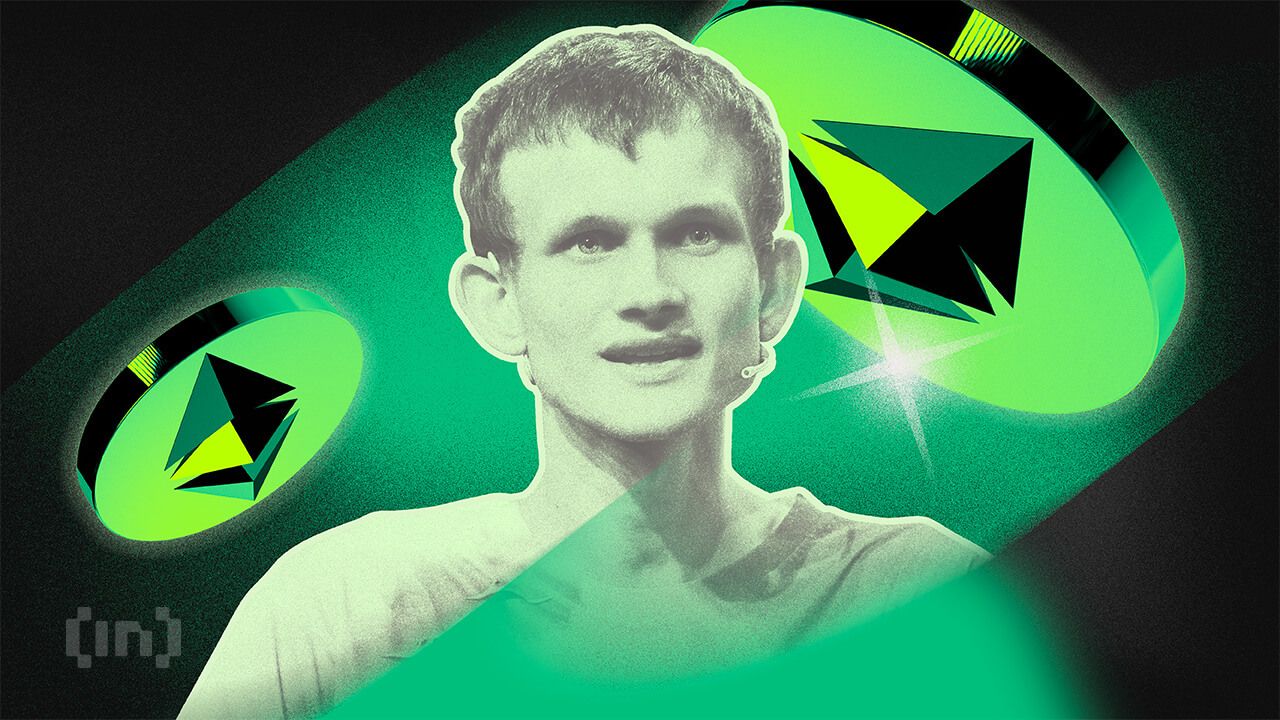
Ethereum (ETH) co-founder Vitalik Buterin has proposed overhauling the blockchain’s smart contract infrastructure by replacing the Ethereum Virtual Machine (EVM) with RISC-V, a widely adopted open-source instruction set architecture.
This shift aims to address one of Ethereum’s key scaling bottlenecks by dramatically improving the efficiency and simplicity of smart contract execution.
Buterin Proposes Ditching EVM for RISC-V
The proposal was detailed in a post on the Ethereum Magicians forum. In it, Buterin suggested that smart contracts could eventually be compiled to RISC-V rather than EVM bytecode.
According to Buterin, this shift addresses long-term scalability challenges. This particularly includes keeping block production competitive and improving zero-knowledge (ZK) EVM-proof efficiency.
“It aims to greatly improve the efficiency of the Ethereum execution layer, resolving one of the primary scaling bottlenecks, and can also greatly improve the execution layer’s simplicity – in fact, it is perhaps the only way to do so,” he wrote.
Current ZK-EVM implementations spend around half of their proving cycles on EVM execution. By switching to a native RISC-V VM, Ethereum could potentially achieve up to 100x efficiency gains.
Importantly, many fundamental aspects of Ethereum’s architecture would remain unchanged, preserving continuity for developers and users. Core abstractions such as accounts, smart contract storage, ETH balances, and cross-contract calls would function exactly as they do today.
Developers would still write contracts in familiar languages like Solidity or Vyper. These would simply be compiled to RISC-V rather than EVM bytecode. Tooling and workflows would remain largely intact, ensuring a smooth transition.
Crucially, the proposal ensures backward compatibility. Existing EVM contracts will remain fully operational and interoperable with new RISC-V contracts.
Buterin outlines several potential implementation paths forward. The first would support both EVM and RISC-V smart contracts natively. The second suggests wrapping EVM contracts to run via an interpreter written in RISC-V. Thus, it would enable a full transition without breaking compatibility.
The third, more modular approach, builds on the second by formally enshrining interpreters as part of the Ethereum protocol. This would allow the EVM and the future virtual machines to be supported in a standardized way.
Buterin stated that the idea is “equally as ambitious as the beam chain effort.”
“The beam chain effort holds great promise for greatly simplifying the consensus layer of Ethereum. But for the execution layer to see similar gains, this kind of radical change may be the only viable path,” Buterin added.
For context, the Ethereum Beam Chain is a redesign of Ethereum’s consensus layer (Beacon Chain). It focuses on faster block times, faster finality, chain snarkification, and quantum resistance. The development will likely begin in 2026.
This proposal fits into Ethereum’s broader vision of modularity, simplicity, and long-term scalability. Previously, BeInCrypto reported on Buterin’s privacy-centric plans for the blockchain.
The proposal focused on integrating privacy-preserving technologies. Moreover, the Pectra upgrade is also nearing, with the launch expected on May 7.
Meanwhile, ETH continues to face market headwinds, trading at March 2023 lows. This year has been quite hard for the altcoin, as it saw a decline of 50.8%. In fact, Ethereum dominance hit a 5-year low last week.

Nonetheless, BeInCrypto data showed a slight recovery over the last 14 days. ETH rose by 6.1%. Over the past day alone, it saw modest gains of 1.7%. At the time of writing, ETH was trading at $1,639.
Disclaimer
In adherence to the Trust Project guidelines, BeInCrypto is committed to unbiased, transparent reporting. This news article aims to provide accurate, timely information. However, readers are advised to verify facts independently and consult with a professional before making any decisions based on this content. Please note that our Terms and Conditions, Privacy Policy, and Disclaimers have been updated.
-

 Ethereum24 hours ago
Ethereum24 hours agoEthereum Consolidates In Symmetrical Triangle: Expert Predicts 17% Price Move
-

 Market17 hours ago
Market17 hours ago1 Year After Bitcoin Halving: What’s Different This Time?
-

 Market23 hours ago
Market23 hours agoToday’s $1K XRP Bag May Become Tomorrow’s Jackpot, Crypto Founder Says
-

 Market21 hours ago
Market21 hours agoMELANIA Crashes to All-Time Low Amid Insiders Continued Sales
-
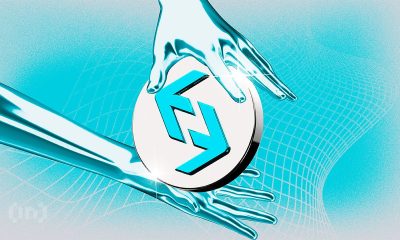
 Market18 hours ago
Market18 hours agoVOXEL Climbs 200% After Suspected Bitget Bot Glitch
-

 Market22 hours ago
Market22 hours agoCharles Schwab Plans Spot Crypto Trading Rollout in 2026
-

 Market16 hours ago
Market16 hours agoTokens Big Players Are Buying
-

 Ethereum23 hours ago
Ethereum23 hours agoEthereum Enters Historic Buy Zone As Price Dips Below Key Level – Insights


